JCB 426 Service Manual - Comprehensive Maintenance & Diagnostics Guide
Product Gallery
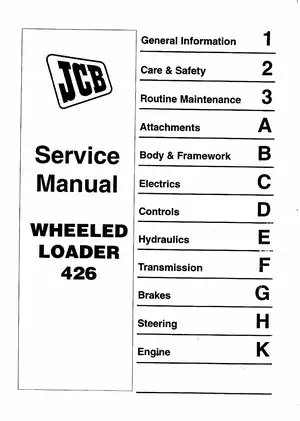
Sample pages from the JCB 426 Service Manual - Comprehensive Maintenance & Diagnostics Guide manual

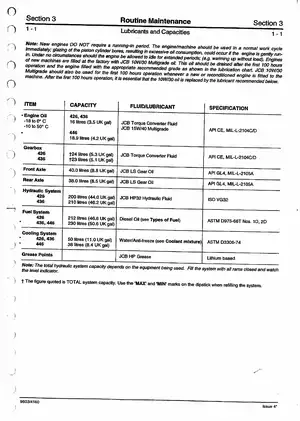
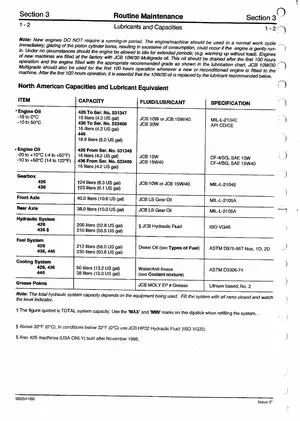
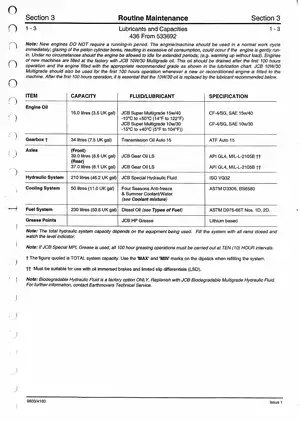
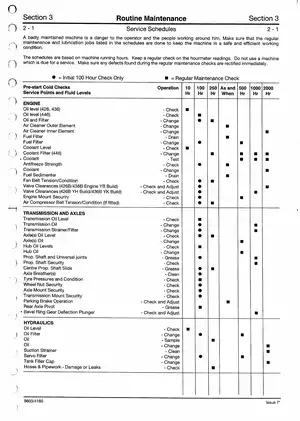
Purchase Information
JCB Wheeled Loader 426 Service Manual - Technical Specifications
- Document Number / Seller:
- 23435 / Christopher Stewart
- File Size:
- 7.46 MB
- File Type:
- Language:
- English
- Pages:
- 117
- Printable:
- Yes
- Estimated Download Time:
- 0.15 Minutes
- Delivery Format:
- Digital (PDF) - Instant Access
- Category:
- Wheel Loader
- Brand:
- JCB
- Reviewed and Approved:
- Aug 14, 2025
JCB Models and Parts Covered in this Wheel Loader Manual
- JCB 426
Complete Manual Information
JCB Wheeled Loader 426 Service Manual - Complete Maintenance Guide
Upgrade your maintenance routine with the JCB Wheeled Loader Service Manual covering models 426. This comprehensive manual is designed for professional operators and enthusiasts alike, providing essential information to ensure the longevity and optimal performance of your machinery.
Features:
- In-depth Care & Safety Guidelines – Follow the recommended safety procedures to maintain a safe working environment.
- Routine Maintenance Schedules – Detailed instructions on routine checks and repairs that keep your loader in top condition.
- Lubrication and Capacity Data – Specifications for fluids and lubricants, ensuring you use the correct types for your machine’s requirements.
- Electrical Systems Diagrams – Clear illustrations and breakdowns of the electrical circuits, aiding quick diagnostics and repairs.
- Engine and Transmission Insights – Detailed maintenance protocols covering engine oil changes, transmission checks, and cooling system preparations. Use this manual to keep your loader running smoothly and efficiently.
What’s Inside:
- Introduction to Loader Models
- Safety Precautions
- Routine Maintenance Checks
- Operating Procedures
- Fluid Levels and Types
- Regular Check Points for Engine, Hydraulics, and Transmission
- Lubrication and Capacity Specifications
- Electrical Systems Overview
- Fuse Chart and Troubleshooting
- Maintenance and Repair Troubleshooting
Using this manual means you'll have all the knowledge required to perform critical repairs and maintenance tasks with confidence. Don't wait until it's too late; ensure your machinery maintains peak performance all year round
Download Instructions for JCB Wheel Loader Manual
Frequently Asked Questions - JCB Wheel Loader Manual
What does this JCB manual cover?
This comprehensive service manual covers detailed repair procedures, maintenance schedules, troubleshooting guides, and technical specifications for JCB 426 Service Manual - Comprehensive Maintenance & Diagnostics Guide. It includes information for the following models: - JCB 426.
Is this manual suitable for beginners?
Yes, this JCB manual is designed for both professional technicians and DIY enthusiasts. It includes step-by-step procedures with clear illustrations and safety guidelines for Wheel Loader maintenance and repair.
What file format will I receive?
You will receive this manual as a PDF file (7.46 MB), which is compatible with all devices. The manual is fully searchable and printable for your convenience.
How quickly can I access the manual after purchase?
You'll receive instant access to your JCB Wheel Loader manual immediately after payment completion. The download link is valid for 3 days, with lifetime re-download guarantee.
Can I print specific sections of the manual?
Absolutely! This digital manual allows you to print any section you need, from individual pages to complete chapters, making it perfect for workshop use.
Customer Reviews and Feedback
Read what our customers say about this JCB Wheel Loader manual and share your own experience.
Add Comment
This policy contains information about your privacy. By posting, you are declaring that you understand this policy:
- Your name, rating, website address, town, country, state and comment will be publicly displayed if entered.
- Aside from the data entered into these form fields, other stored data about your comment will include:
- Your IP address (not displayed)
- The time/date of your submission (displayed)
- Your email address will not be shared. It is collected for only two reasons:
- Administrative purposes, should a need to contact you arise.
- To inform you of new comments, should you subscribe to receive notifications.
- A cookie may be set on your computer. This is used to remember your inputs. It will expire by itself.
This policy is subject to change at any time and without notice.
These terms and conditions contain rules about posting comments. By submitting a comment, you are declaring that you agree with these rules:
- Although the administrator will attempt to moderate comments, it is impossible for every comment to have been moderated at any given time.
- You acknowledge that all comments express the views and opinions of the original author and not those of the administrator.
- You agree not to post any material which is knowingly false, obscene, hateful, threatening, harassing or invasive of a person's privacy.
- The administrator has the right to edit, move or remove any comment for any reason and without notice.
Failure to comply with these rules may result in being banned from submitting further comments.
These terms and conditions are subject to change at any time and without notice.
Comments (3)